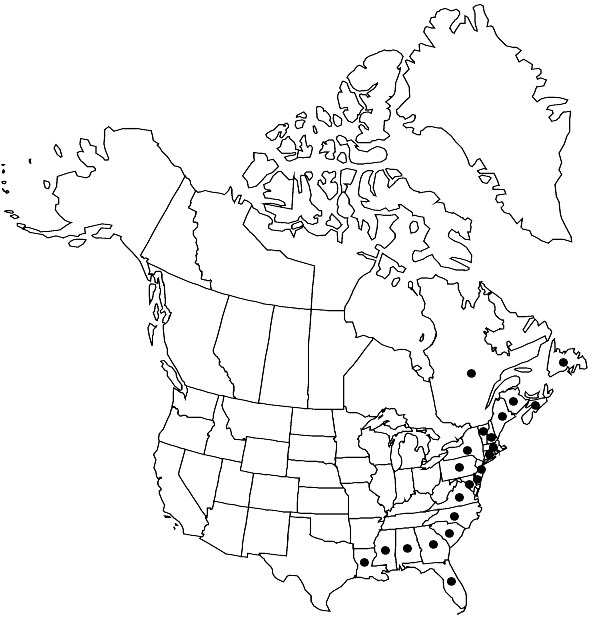Sphagnum torreyanum
Mem. Amer. Acad. Arts, n. s. 4: 174. 1849,.
Plants robust and weak-stemmed; green to golden yellow; capitulum ± rounded in emergent forms, flat in submersed forms; lacking distinct terminal bud. Stems green to brown; superficial cortex of 2 layers of thin-walled and enlarged cells. Stem leaves triangular, 1–1.7 mm, apex acute to slightly obtuse; leaves usually appressed; margins entire; hyaline cells fibrillose and usually septate at base and sides. Branches unranked, long and tapering, leaves greatly elongated at distal end. Branch fascicles with 2 spreading and 2 pendent branches. Branch stems green; cortex enlarged with conspicuous retort cells. Branch leaves ovate-lanceolate to lanceolate, 3–5.5 mm; straight but sometimes slightly falcate-secund; weakly undulate and recurved when dry; margins entire; hyaline cells on convex surface with 0–1 pore per cell, on concave surface with round wall thinnings on the apices and angles; chlorophyllous cells narrowly triangular in transverse section and just enclosed on the concave surface. Sexual condition dioicous. Spores 26–29 µm; both surfaces distinctly papillose, appearing pusticulate to irregularly pusticulate; proximal laesura mostly less than 0.5 spore radius.
Habitat: Forming wet often floating carpets in weakly minerotrophic mires
Elevation: low to moderate elevations
Distribution

St. Pierre and Miquelon (Miquelon), N.B., Nfld. and Labr. (Nfld.), N.S., Que., Ala., Conn., Del., Fla., Ga., La., Maine, Md., Mass., Miss., N.H., N.J., N.Y., N.C., Pa., R.I., S.C., Vt., Va.
Discussion
Sporophytes are uncommon in Sphagnum torreyanum. See discussion under 24. S. atlanticum for taxonomic distinctions.
Selected References
None.